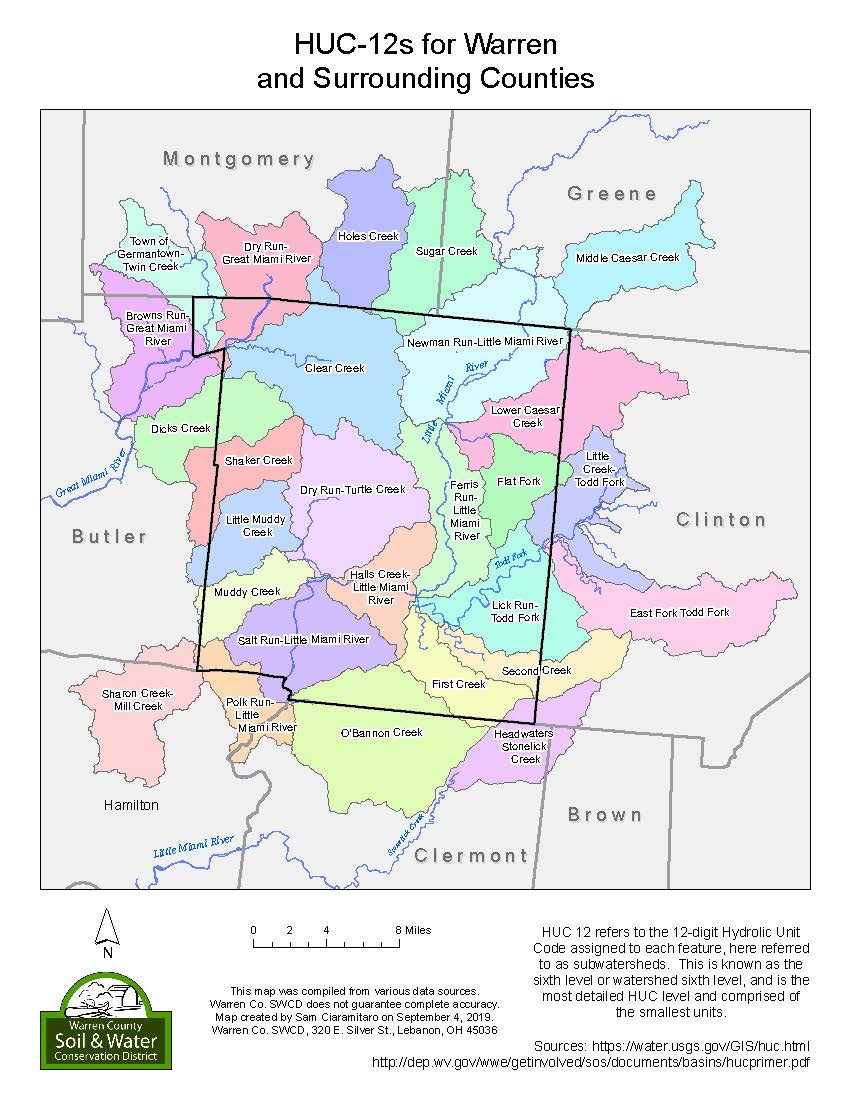|
No matter where you live, the place that you call home is situated in a watershed: a land area that drains to a central location, such as a lake, river, or ocean. You can think of it as a shallow depression or bowl in the landscape, where the “rim” is a ridge or hill: even if your home is situated on the rim of the bowl, water washing off of your neighborhood is draining to the same place as areas on the opposite side of the bowl—everything is connected.
Small watersheds make up larger watersheds. In fact, here in Southwest Ohio we are a part of the Ohio River Basin Watershed which drains to the Ohio River, Mississippi River and ultimately the Gulf of Mexico. John Wesley Powell, scientist geographer, described watersheds as, “That area of land, a bounded hydrologic system, within which all living things are inextricably linked by their common water course and where, as humans settled, simple logic demanded that they become part of a community.” Watersheds come in all shapes and cross county, state, and national boundaries. In the continental US, there are 2,110 watersheds; including Hawaii, Alaska, and Puerto Rico, there are 2,267 watersheds. For more information on the Ohio River Basin watershed check out, https://www.savelocalwaters.org/ohio-river-basin.html. With this understanding that our water system is all interconnected, we can grasp that our actions affecting water in a smaller watershed can lead to issues in a larger watershed. Runoff from fields, lawns, and pavement could carry potentially harmful materials from our watersheds to our rivers and end up in our oceans. Even if you live, work, or play far from a river, your actions could have an impact on the quality of the water far from the initial source. To research your watershed, check out the Environmental Protection Agencies - How's My Waterway interactive website - https://mywaterway.epa.gov/. For more questions regarding Warren County Soil and Water Conservation District programs and/or technical assistance on water or soil questions, visit http://warrenswcd.com or call, 513-695-1337.
0 Comments
I was out on my regular inspection last week when I drove past the historic Peters Cartridge superfund clean up site. I'm always slightly distracted when I drive around that narrow "s" curve and over the bridge as I strain to study the remnants of the historic structures. This day something different caught my eye. Hundreds, even thousands of white tubes were sticking up from the ground as if growing. I pulled into the bike path parking lot and took a closer look. Beautiful, healthy trees were flourishing from every single white tube. I becoming excited by the prospect of thousands of new tree seedlings! I stood there in awe of the shear volume of tree seedlings and curious how far this project reached. The tubes were lined up for as long as I could see so I started to walk down the path to investigate. I found out later, I was photographing approximately 2000 newly planted native tree seedlings. The project I stumbled upon was the result of a partnership between Little Miami Conservancy, DuPont, Sycamore High School students and numerous local volunteers. Little Miami Conservancy organized the work and collaborated the effort. I was tremendously impressed by what I saw and what seemed like never ending rows of native tree seedlings. The trail beautification effort was successful and even included a sturdy picnic table and additional wood chip lined trails along the river. Warren SWCD applaud the effort of every participant and are excited to see this area grow! Reforestation is the natural or intentional restocking of existing forests and woodlands that have been depleted, usually through deforestation. Why Reforestation is Important According to the United States Department of Agriculture forest Service, America's richly, diverse forests provide vital products and amenities to our society including quality habitat for wildlife, biodiversity of plant and animal communities, clean water, aesthetic benefits, and recreational opportunities. Timely reforestation following harvest or a major catastrophic event to restore forest cover on denuded lands is often important to maintaining forest ecosystems and deriving associated ecological, social, and economic benefits.
Reforestation is an element of a land stewardship ethic that includes growing, nurturing, and harvesting trees to meet specified resource objectives while conserving soil, air, and water quality in harmony with other resource management concerns. Reforestation following harvest or revegetating areas denuded by catastrophic fire or other natural disaster is often important to ensuring forest sustainability; it is a top priority for national forest management. Are you interested in the trees on or near your property? Ohio Department of Natural Resources Division of Forestry has a multitude of information and even assistance programs to guide you. Visit their Landowner Assistance page to learn more. The service forester for Area 12/Warren County is Pat Migliozzi, click HERE for his contact information and office hours. In addition, there is a nice publication that contains education information on managing and protecting Ohio's forest, wildlife and water resources. Subscribe HERE. |
Details
Warren County SWCD Staff BlogA blog to keep you informed on all the latest news at Warren County SWCD and in the conservation world. Archives
May 2024
Categories
All
|
|
|
Contact:PHONE: (513) 695 - 1337
EMAIL: [email protected] HOURS: Monday - Friday 7:30am - 4:00pm (except holidays) Connect:Warren County Soil & Water Conservation District Copyright © 2016
Warren SWCD Privacy Notice. Emails are serviced by Constant Contact. Constant Contact's Privacy Notice. |


